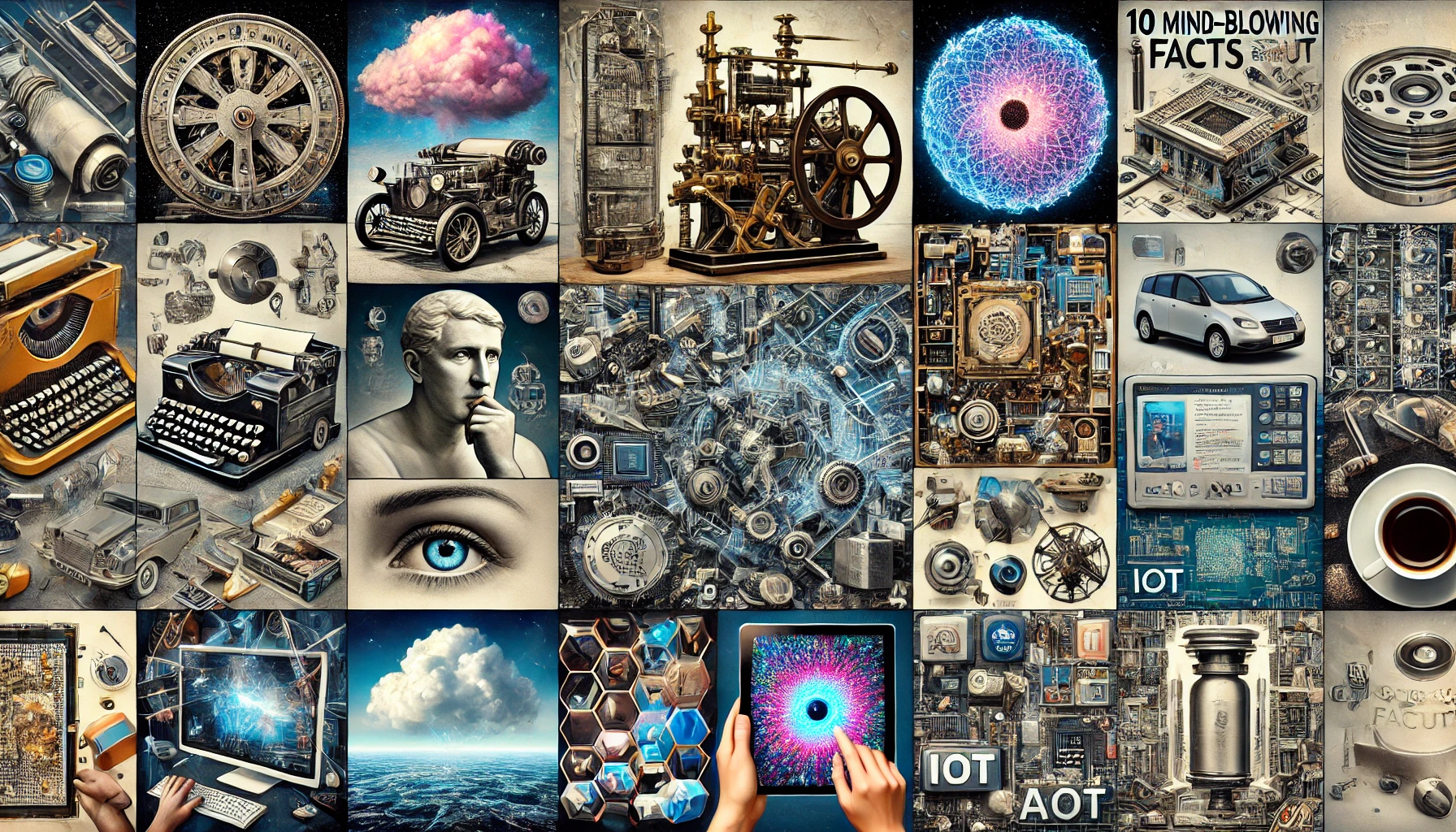Title: 10 Mind-Blowing Facts About Technology That Will Amaze You
Subtitle: Unveiling the Astonishing World of Modern Innovations
Description:
Technology has become an integral part of our daily lives, evolving at an unprecedented pace. In this post, we delve into ten incredible facts about technology that highlight its profound impact on the world. From groundbreaking advancements to astonishing statistics, these facts will leave you amazed and inspired.
Main Content:
1. The First Computer Was Invented in the 19th Century
The concept of computers dates back much further than most people realize. Charles Babbage, an English polymath, designed the first mechanical computer, known as the Analytical Engine, in the 1830s. This invention laid the groundwork for the development of modern computers. Babbage’s machine was never completed in his lifetime, but its design featured many elements of modern computers, such as an arithmetic logic unit, control flow, and memory. His visionary work is often regarded as a significant milestone in the history of computing.

2. More People Have Mobile Phones Than Toilets
In a striking illustration of global connectivity, more people worldwide have access to mobile phones than toilets. According to the United Nations, around 6 billion people have mobile phones, while only 4.5 billion have access to working toilets. This disparity underscores the pervasive reach of technology. The rapid proliferation of mobile technology has enabled unprecedented communication, access to information, and economic opportunities, particularly in developing countries where traditional infrastructure may be lacking.
3. The First 1GB Hard Drive Was Introduced in 1980
In 1980, IBM introduced the first 1GB hard drive, which weighed over 500 pounds and cost $40,000. Today, we carry terabytes of data in our pockets, demonstrating the rapid evolution of data storage technology. The development of hard drive technology has dramatically increased data storage capacity while reducing physical size and cost, revolutionizing how we store and access information. Comparing the first 1GB hard drive to modern solid-state drives (SSDs) highlights the astonishing advancements in this field.
4. Over 90% of the World’s Data Was Created in the Last Two Years
The digital age has led to an explosion of data generation. It is estimated that over 90% of the world’s data has been created in the last two years alone. This massive influx of information presents both opportunities and challenges in data management and analysis. Big Data technologies have emerged to handle this deluge of information, enabling businesses and researchers to extract valuable insights and drive innovation across various sectors, including healthcare, finance, and marketing.
5. India is Home to the World’s Largest Biometric ID System
India’s Aadhaar program is the world’s largest biometric identification system, with over 1.3 billion enrolled members. It uses fingerprints, iris scans, and photographs to provide a unique identification number to every citizen, revolutionizing access to services. The Aadhaar system has significantly improved the efficiency and transparency of government services, reduced fraud and ensuring that benefits reach the intended recipients. It has also facilitated the rise of digital payments and financial inclusion for millions of Indians.
6. Quantum Computers Can Solve Problems Faster Than Classical Computers
Quantum computing represents a significant leap forward in processing power. Unlike classical computers, which use bits, quantum computers use qubits that can exist in multiple states simultaneously. This allows them to solve complex problems much faster than traditional computers. Quantum computers have the potential to revolutionize fields such as cryptography, materials science, and drug discovery by performing calculations that are currently infeasible for classical computers. Companies and research institutions worldwide are investing heavily in quantum computing research and development.
7. There Are More Internet-Connected Devices Than People
The Internet of Things (IoT) has led to an explosion of connected devices. As of 2024, there are an estimated 35 billion IoT devices worldwide, surpassing the global population. These devices range from smart home gadgets to industrial sensors, transforming how we interact with technology. IoT technology has enabled the development of smart cities, intelligent transportation systems, and advanced healthcare solutions, improving the quality of life and operational efficiency in various domains.
8. The First Webcam Was Used to Monitor a Coffee Pot
In 1993, researchers at the University of Cambridge developed the first webcam to monitor a coffee pot. This early application of webcam technology was designed to help researchers avoid wasted trips to an empty coffee pot, marking a humorous yet practical beginning for this ubiquitous technology. The first webcam, known as the Trojan Room Coffee Pot, became an internet sensation and paved the way for the widespread use of webcams in video conferencing, security, and live streaming.
9. The World’s Most Powerful Supercomputer Can Perform Quintillions of Calculations Per Second
As of 2024, the Fugaku supercomputer in Japan holds the title of the world’s most powerful supercomputer. It can perform over 442 quadrillion calculations per second (petaflops), highlighting the incredible advancements in computational capabilities. Supercomputers like Fugaku are used for complex simulations, climate modeling, and scientific research, pushing the boundaries of what is possible in various scientific and engineering disciplines.

10. Artificial Intelligence Can Compose Music and
write Stories
AI has made significant strides in creative fields. AI algorithms can now compose music, write stories, and even create visual art, demonstrating the expanding capabilities of machines in traditionally human-dominated areas. AI-powered tools are being used by artists and creators to augment their work, generating new possibilities for artistic expression and innovation. For instance, AI-generated music and artwork are being showcased in exhibitions, blurring the lines between human and machine creativity.
Visual Integration
- Introduction Section: Add a bold infographic summarizing the topic and its importance.
- Key Sections: Include step-by-step process illustrations or data-driven charts to simplify and highlight significant points.
- Examples Section: Use relatable photos or graphics that depict the scenarios discussed. For instance, include images of small business owners or professionals achieving success.
- Conclusion: Add an inspiring visual, such as a motivational quote or an empowering graphic that reinforces the key message of the post.
Conclusion
Technology continues to evolve at a breathtaking pace, shaping our world in ways we could never have imagined. These mind-blowing facts underscore the profound impact of technological advancements on our daily lives and the endless possibilities for the future. From the humble beginnings of the first mechanical computer to the cutting-edge developments in quantum computing and AI, technology has transformed every aspect of our existence. Staying informed about these advancements can inspire us to embrace the future and leverage technology to create a better world.
Actionable CTA
Explore our related articles on technological innovations, subscribe to our newsletter for the latest updates, or join the discussion in the comments below. Stay informed and inspired to leverage technology in your own life!


